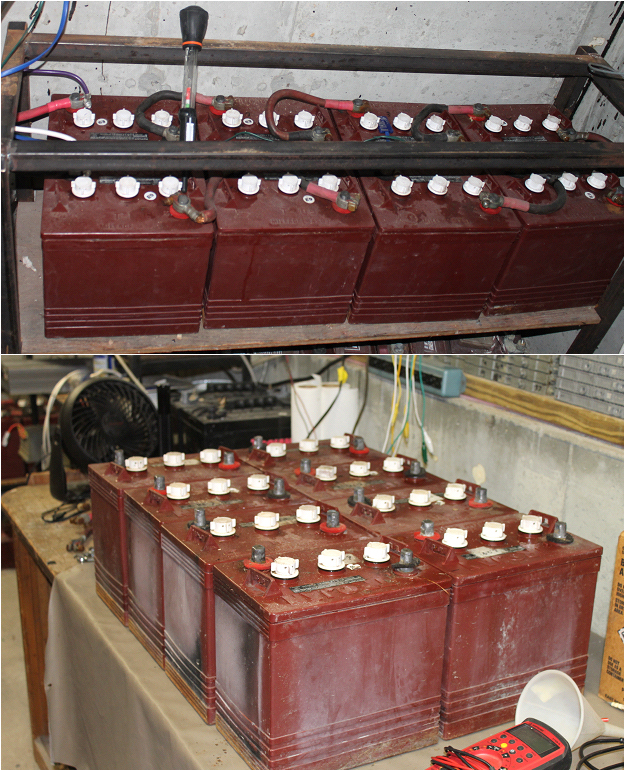Giving the batteries a workout
|
 | |
|
exercizing the batteries
|
With the crappy weather, and the out of shape batteries, I have some work to do to get them back in shape. Today was nice and sunny, so I kicked up the charge controllers equalization voltage, and let the chargers make them boil.
When a battery gets sulphated, the voltage rises when under charge since the plates are partially insulated with sulphate. The charge controllers will pump everything they can gather from the sun into the batteries until the equalization voltage is reached, and then they throttle back the current to maintain that voltage. During this process one is supposed to look at the specific gravity and record it. When the specific gravity has peaked or risen to the correct 1.280V/cell, temperature compensated value, the battery is back in shape. My first batch of batteries from the telephone truck had a low specific gravity, and from the first run test they also have severely reduced capacity.
I also seem to have overfilled the cells as the correct level should be 1/8" below the bottom of the fill well. I had it up to the bottom, so I had diluted the acid, again reducing the specific gravity, so I need to boil off some of that water.
After struggling with what I thought was going to be a good quality Hydrometer, and finding that the float always stuck to the side of the tube, I decided that unless I wanted to try and fix that problem by modifying the thing,I should look into another way to accurately measure the specific gravity.
I ordered a refractometer from Napa, and should get it tomorrow. This actually measures the SG by looking at how the heavier acid bends or refracts light. The same device can check the SG of water glycol antifreeze, and it only cost $59.
Other more expensive devices use a resonating vibrating tube which changes frequency with specific gravity, but spending over $1000 just to measure SG seems like an overkill.Time will tell.
I finally pulled the frozen batteries from the electric yard cart, and will get them ready for equilibration after the first set is as good as it gets. The tricky part of this equalization process is that as the batteries desulphate, their voltage drops, which increases the current that the charge controllers will put into them as the charge controllers try to push the pack voltage to the target equalization voltage. To avoid overheating the cells, warping plates, and boiling the acid too vigorously, I need to watch the current and temperature, turn down the equalization target voltage as things improve. This will need to be done on the other string of batteries, and getting them both into the same shape is going to be pretty tricky. One reason they do not recommend mixing batteries of difference life histories.
Looks sunny for the next day or two, fingers crossed.
|
|